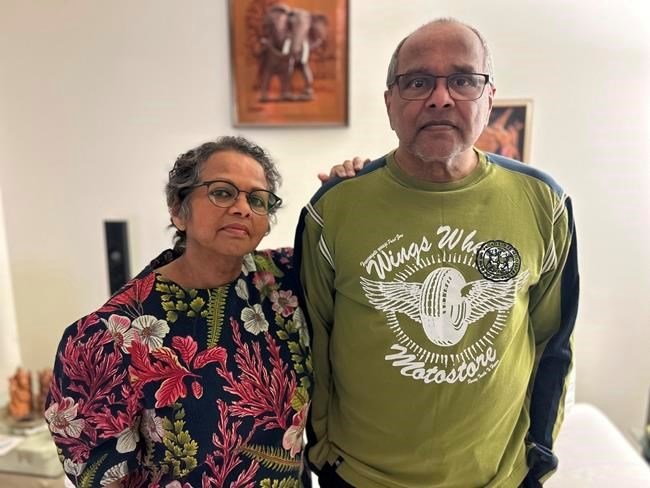TORONTO — Padma Ranjan used to pass a blood donation centre on her bus ride to work in Vancouver and wish she could donate.
Her family had been regular blood donors when she was growing up in Malaysia. She moved to the U.K. in the late 1970s and came to Canada about 10 years later.
Her desire to give blood intensified in recent years when her husband developed internal bleeding in his upper bowel and required weekly blood transfusions.
"When he first needed the blood I thought 'Oh my God. I could have given,'" said Ranjan, who is 69.
Ranjan's years in the U.K. made her ineligible to donate in Canada because of concerns around the possible transmission of variant Creutzfeldt-Jakob disease — the human form of bovine spongiform encephalopathy, or "mad cow disease."
But last November, Health Canada granted approval to lift the donation ban for people who had lived or travelled for an extensive period of time in the U.K., Ireland or France in the 1980s and 1990s.
Canadian Blood Services began allowing that previously ineligible group to start donating on Dec. 4.
Ranjan, who is now retired, rolled up her sleeves the next day — and travelled from her home in the suburb of Richmond, B.C., to the same donation centre in Vancouver she used to pass each day on her commute.
She's one of more than 4,000 people who came forward to donate between Dec. 4 and Jan. 19 because they heard the ban was lifted, Canadian Blood Services said.
The number includes both new donors and people who tried to donate in the past but were ineligible because they had been in the U.K., Ireland or France.
"That's a really great response," said Ron Vezina, vice-president of public affairs at Canadian Blood Services.
The agency set a target of getting at least 7,000 new donors who were previously ineligible because of the ban over the next year, he said.
"We're more than halfway there very early in the game. But that doesn't mean taking our foot off the gas," Vezina said.
An adequate blood supply requires a total of 100,000 new donors every year, he said.
"This is an important contributor to that, to keep up with demand from hospitals and patients."
Health Canada determined the ban could be lifted after almost 30 years of research and surveillance made it clear that people who had been in mad cow disease-affected countries during the 1980s and 1990s could now donate blood safely, Dr. Aditi Khandelwal, medical officer for Canadian Blood Services, said in an interview in November.
There have been two cases of the disease in Canada, said Khandelwal, who is also a hematologist and blood transfusion physician in Toronto.
One of them had lived in the U.K. and the other had lived in Saudi Arabia and consumed beef imported from the U.K. Those cases happened in 2002 and 2011, respectively, she said.
It's now known that the average time from exposure to developing the illness is eight and a half years, she said, and that it can be fatal within about 14 months.
That means people who lived in the high-risk countries in the 1980s and 1990s would have developed the disease long before now, she said.
An additional safeguard is the fact that white blood cells are reduced or removed from blood donations before transfusion, Khandelwal said.
The blood inventory in Canada is currently "at or near optimal levels," which means there is a five to eight day supply, Vezina said.
In addition to people who were previously affected by the ban, many other people in Canada donated during the holiday season, he said.
But maintaining an adequate supply requires people to donate continuously throughout the year, because blood products are fresh and can't be stockpiled or warehoused, Vezina said.
Ranjan plans to do her part to make that happen and already has her next appointment to donate booked for the end of February.
"I'll give as much as I can as long as I can," she said.
This report by The Canadian Press was first published Jan. 26, 2024.
Canadian Press health coverage receives support through a partnership with the Canadian Medical Association. CP is solely responsible for this content.
Nicole Ireland, The Canadian Press

